General Information
Indigenous peoples have lived on the land now known as the Great Bear Rainforest since time immemorial. The land is now shared with more recent settlers in communities up and down the coast.
The Great Bear Rainforest is the largest intact coastal temperate rainforest in the world, at 6.4 million hectares. The rainforest, spanning the central and northern coast regions of British Columbia, is perhaps best known for its population of Kermode or “Spirit” bears. Spirit bears are a subspecies of black bear that possess a white fur coat due to a recessive gene. It is estimated that no more than two hundred of these bears reside in the world, and only in the Great Bear Rainforest.
Pacific salmon reproduce in streams up and down the coast of the Great Bear Rainforest, and are considered a “keystone species” in the region. Spirit bears depend on the migrating salmon as a primary food source, as do coastal wolves, bald eagles and seagulls, among other species.


Humpback whales, seals, sea lions, orcas and otters are some of the marine mammals you may see during your time exploring the Great Bear Sea, the waters extending from Campbell River on Vancouver Island up to B.C.’s north coast.
1000 year-old western redcedar trees and Sitka spruce trees—some of the oldest and tallest conifers in the world—can be found throughout the Great Bear Rainforest.

Visiting the Great Bear Rainforest is an unforgettable experience. Continue to explore this website and learn more about traveling in the region!


